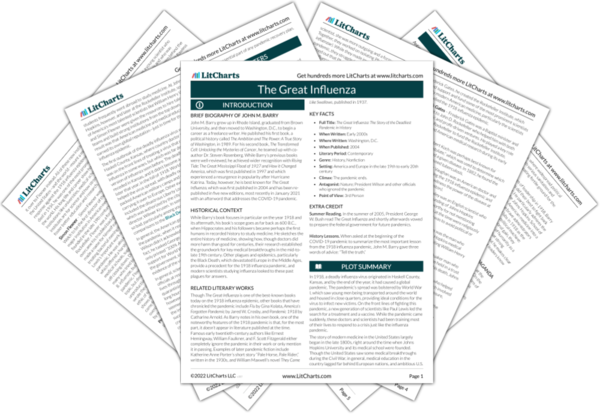Pathogen Quotes in The Great Influenza
In the days before antibiotics, an infection launched a race to the death between the pathogen and the immune system. Sometimes a victim would become desperately ill; then, suddenly and almost miraculously, the fever would break and the victim would recover. This “resolution by crisis” occurred when the immune system barely won the race, when it counterattacked massively and successfully.
But once the body survives an infection, it gains an advantage. For the immune system epitomizes the saying that that which does not kill you makes you stronger.
Lewis knew full well that little of what he was doing was good science. It was all, or nearly all, based on informed guesswork. He only worked harder.
As he worked, the society about him teetered on the edge of collapse.
The greatest questions remained the simplest ones: What caused influenza? What was the pathogen? Was Pfeiffer right when he identified a cause and named it Bacillus influenzae? And if he was not right, then what did cause it? What was the killer?












